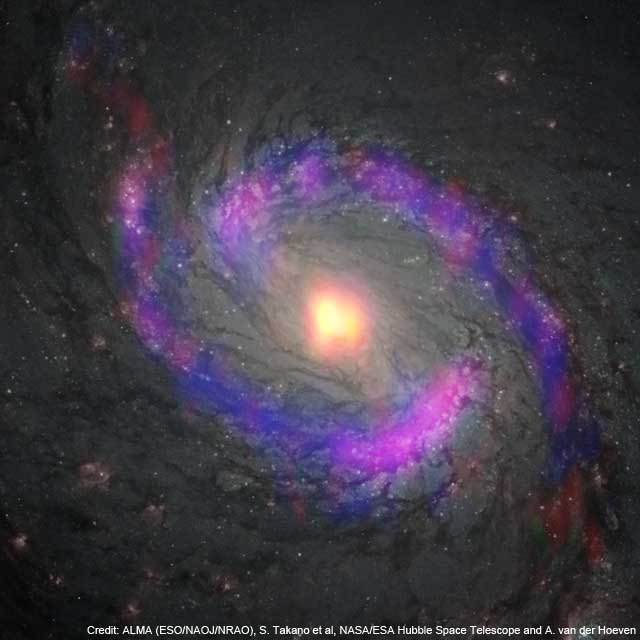ALMA Revealed Surprisingly Mild Environment around a Supermassive Black Hole
| Science
A research team led by Shuro Takano at the National Astronomical Observatory of Japan (NAOJ) and Taku Nakajima at Nagoya University observed the spiral galaxy M77, also known as NGC1068, with the Atacama Large Millimeter/submillimeter Array (ALMA) and discovered that organic molecules are concentrated in a region surrounding a supermassive black hole at its center. Although these molecules around a black hole are thought to be dissociated by strong X-rays and UV photons, the research results indicate that some regions are shielded from X-rays and UV photons due to a large amount of dust and gas. These results, which were made possible by the high sensitivity and wideband observing capability of ALMA, will be a key to understanding the mysterious environment around supermassive black holes.

These observational results were published by Takano et al. as “Distributions of molecules in the circumnuclear disk and surrounding starburst ring in the Seyfert galaxy NGC 1068 observed with ALMA” (in the astronomical journal Publications of the Astronomical Society of Japan (PASJ), issued in July 2014) and by Nakajima et al. “A Multi-Transition Study of Molecules toward NGC 1068 based on High-Resolution Imaging Observations with ALMA” (in PASJ issued in February 2015).